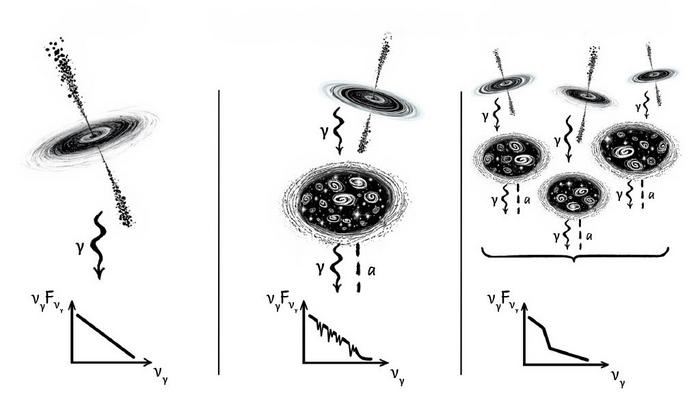
Physicists tap universe to find dark matter

Physicists at the University of Copenhagen have tapped into the enormous magnetic fields of galaxy clusters to hunt for axions, an elusive particle that could help explain dark matter.
Galaxy clusters are the heaviest structures in the universe, weighing a quadrillion times more than the Sun. Axions, if they exist, would be far lighter than the lightest atom. They have never been detected, yet they could make up most of the matter in the cosmos.
Instead of using a particle accelerator on Earth, researchers studied radiation from 32 supermassive black holes positioned behind galaxy clusters. As the radiation passed through the clusters’ magnetic fields, some of it could hypothetically transform into axions, leaving faint, step-like patterns in the data.
“By combining data from many sources, we turned what looked like random noise into a clear pattern,” said Oleg Ruchayskiy, associate professor at the Niels Bohr Institute and senior author of the study published in Nature Astronomy.
The results are not proof, but they narrow the search for axions and open a new method for detecting them using gamma rays, X-rays and other forms of radiation. “It has opened a new path to studying these elusive particles,” said postdoctoral researcher Lidiia Zadorozhna.









